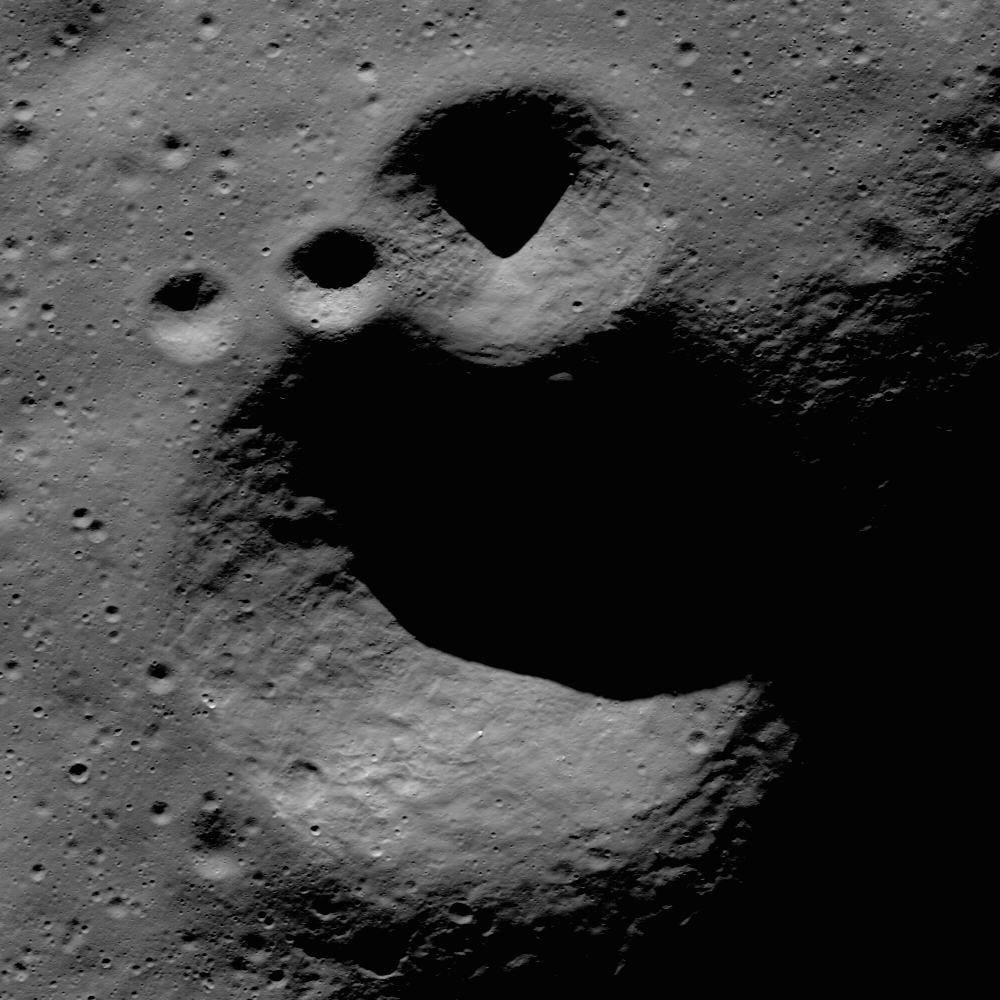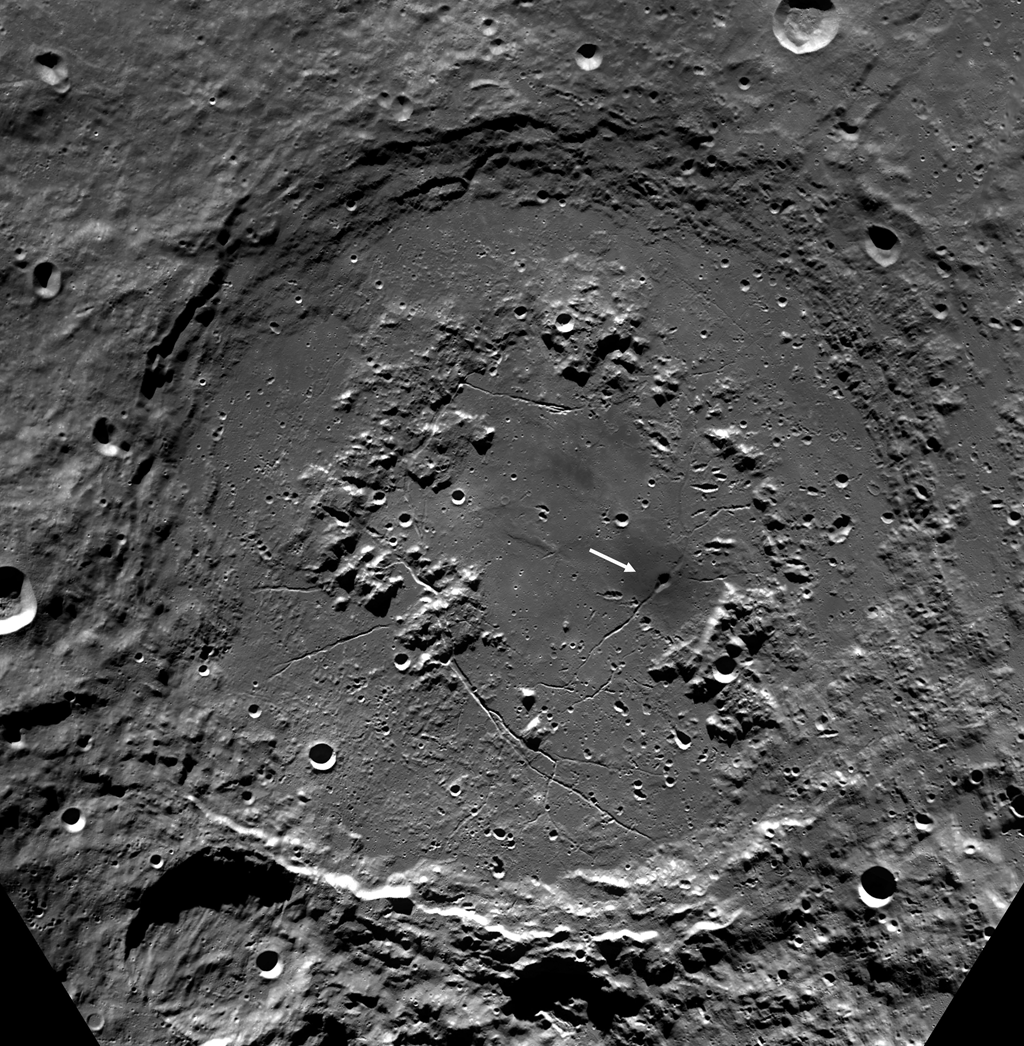
How old is the Moon? How old are the craters and basins, and the dark mare that fills many of them? When did lunar volcanism begin and end? These and many other questions about the Moon have been asked for millennia, and one of our best means for answering them is by simply counting the number impact craters on a particular feature. This NAC frame (785 m across) shows a cluster of small impact craters on the rim of a cone-shaped pyroclastic deposit in the floor of Schrodinger Basin. The largest crater in the cluster is about 690 m across. The Schrodinger cone is one of the largest such single-vent deposits observed on the Moon; crater counts by Shoemaker et al. (1994) suggest that it may be less than 1 billion years old--ancient, but still young in lunar terms! Although likely relatively young, the superimposed craters in this cluster have a subdued appearance because they formed in the loose pyroclastic material on the rim of the cone’s vent.
Impact cratering is one of the few processes affecting all planetary surfaces, including the surface of our own Earth. To understand the relative ages of craters, basins, and surface deposits on the Moon, we study its impact craters. More specifically, we count the number and measure size, shape, and distribution of craters and compare those from place to place on the Moon. We know that older surfaces have more craters (because they have been exposed to impacts for longer than younger surfaces) and we’ve learned that over time newer craters begin to erase the older ones. We call this ‘equilibrium’. If we relate our crater counts to models of the number of things (such as meteors, asteroids and comets) roaming around in space available to create those craters, we can begin to understand the relative ages of features and units on the Moon. Such relative ages have been tied to real or absolute ages at the few sites from which samples have been returned by the Apollo and Luna missions.
Studies of lunar impact craters have worked well in areas such as ‘typical’ mare and highlands units where the properties of surface soils and rocks are reasonably well understood. Are crater counts reliable on pyroclastic deposits, where the soil is formed from loose, relatively unconsolidated ash. Craters formed in such material can appear older than they are because they tend to be shallower, with lower rims and subdued ejecta blankets. The loose material in a pyroclastic deposit appears to both alter the original appearance of an impact crater and make the process of degradation more efficient. This means that craters disappear faster than they do on harder surfaces, such as the mare basalt. If corrections for the type material that craters form in are not applied, then relative age estimates are in error. Such is likely the case with the craters in this cluster on the rim of the volcanic cone in Schrodinger basin.
Crater counts for the region around and within Schrodinger basin by Shoemaker et al. (1994) indicate that it is likely the second-youngest basin on the lunar surface. Schrodinger and its interior deposits are of interest in future lunar exploration in part because pyroclastic deposits have economically valuable components such as iron and titanium.
For more information on LROC's observation campaign for the Constellation Program regions of interest read this Lunar and Planetary Science Conference abstract, and visit the LRO Science Targeting Meeting website (look for the baseball card summary sheets for each site: part 1, part 2).
Explore the Schrodinger Constellation region of interest for yourself!
For more information, see:
Shoemaker, E.M., M.S. Robinson, and E. Eliason, 1994, The South Pole of the Moon as Seen by Clementine, Science, v. 266, pp. 1851-1854.
Published by Lisa Gaddis on 22 April 2010
